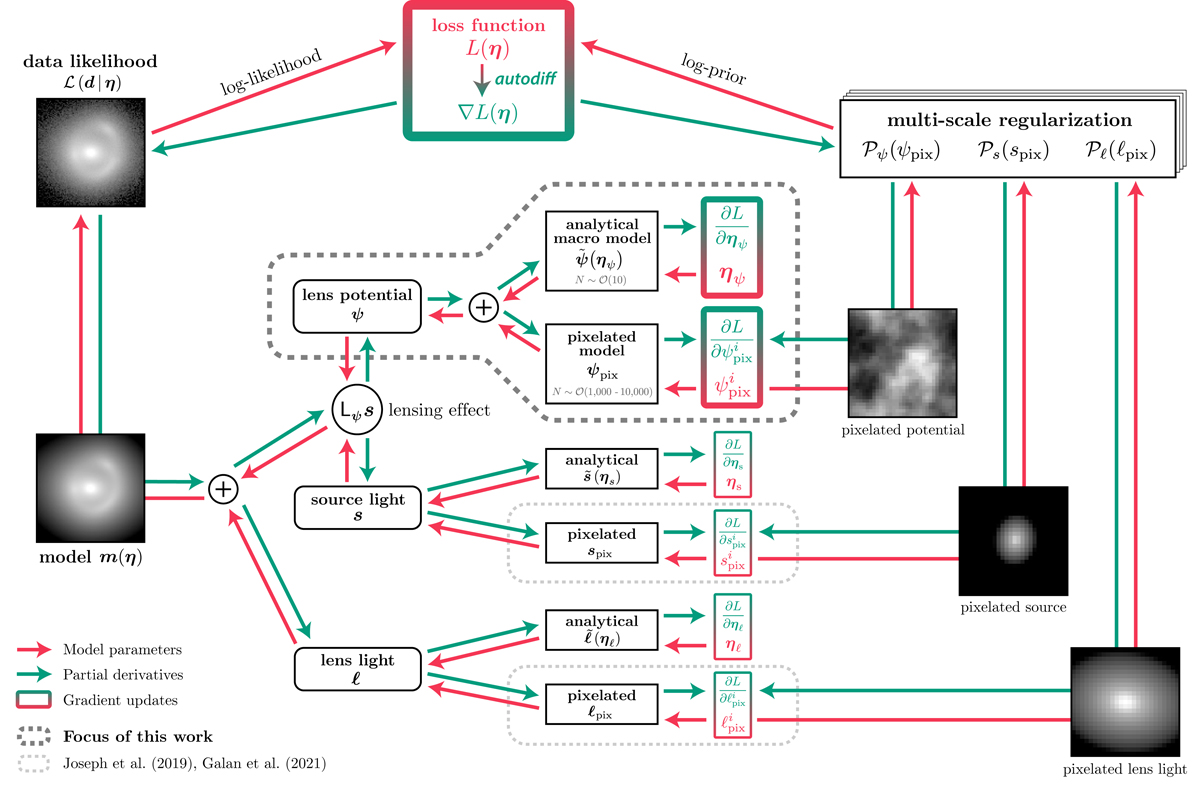Fig. 1.

Download original image
Flow chart of the fully differentiable method used in this work and implemented in HERCULENS, which merges analytical profiles with pixelated components. We indicate the typical number of parameters N for the analytical potential ηψ and the pixelated potential ψpix. Partial derivatives are computed and propagated for all parameters. These derivatives are then used to update parameter values in the direction indicated by the gradient of the loss function L. We note that the blurring operator B (see Eq. (4)) is also used to generate the model m but is not shown in the diagram to avoid clutter. This work focuses on modeling the lensing potential ψ, and we refer to Joseph et al. (2019) and Galan et al. (2021) for the modeling of surface brightness distributions.
Current usage metrics show cumulative count of Article Views (full-text article views including HTML views, PDF and ePub downloads, according to the available data) and Abstracts Views on Vision4Press platform.
Data correspond to usage on the plateform after 2015. The current usage metrics is available 48-96 hours after online publication and is updated daily on week days.
Initial download of the metrics may take a while.


